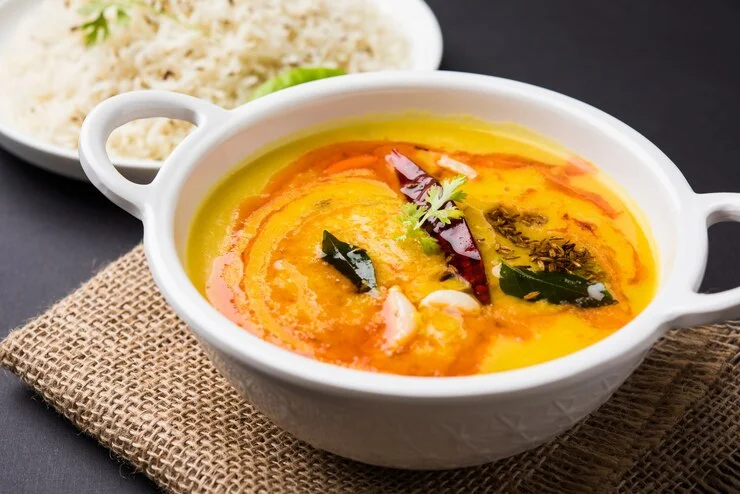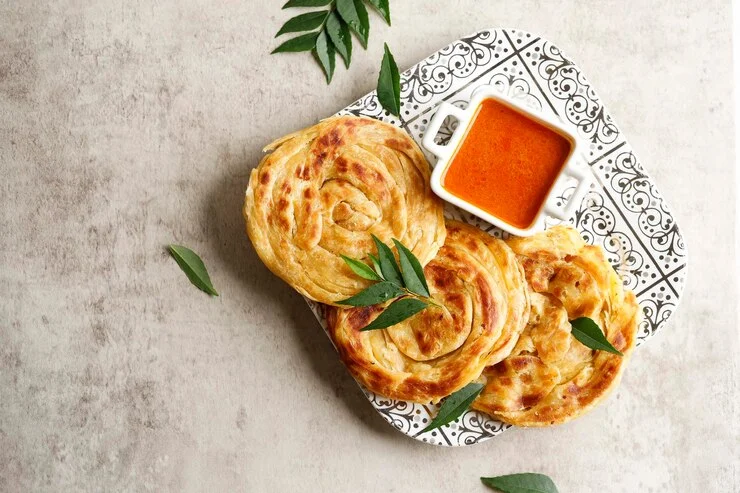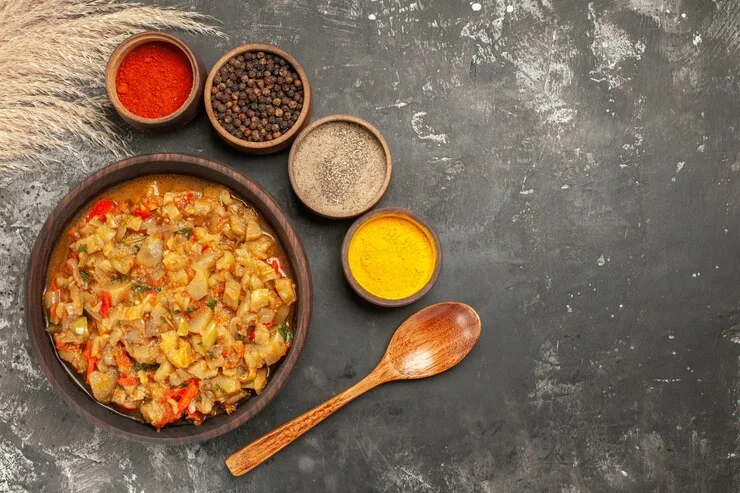Beetroot Rasam (Beetroot Saru):-
Beetroot Rasam (Beetroot Saroo) is a divine interpretation of the exemplary Tomato Rasam made by adding beetroot puree. Make it using my simple recipe (vegan, gluten-free).
About Beetroot Rasam:-
Beetroot Rasam (Beetroot Saroo) is a variation of exemplary tomato rasam made by adding beetroot puree to the traditional recipe.
It is spicy, spicy and full of hot flavour. This recipe is very easy to make and is ready in less than 30 minutes using a few basic ingredients. It’s vegetable lover and gluten free and you can of course double or triple this recipe. ,

Material:-
For Rasam Powder
You will need black pepper, cumin, dried red chili and whole coriander seeds.
for rasam
To make rasam, you will need a little fresh beetroot, a little fresh tomato, tamarind mash, garlic, curry leaves, salt and green coriander.
Season the rasam with ghee (or oil), earthy mustard, asafoetida and dry red chillies.
Instructions to make Beetroot Rasam:-
make rasam powder
½ teaspoon whole black pepper
spoon cumin
2 whole dry red chillies (stem removed)
1 teaspoon whole coriander seeds
Cook on medium heat until lightly cooked and fragrant (3-4 minutes).
Remove the dish from the intensity and add the cooked ingredients to the mortar and pestle. Crush it to make a coarse rasam powder.
make rasam
Heat 1 cup water in a vessel on medium intensity.
Add ½ cup peeled and chopped beetroot and ½ cup chopped tomatoes into the container and cook for 10 minutes.
Remove the pan from heat and allow the contents to cool to room temperature.
Put the cooked beetroot and tomatoes with water in a blender and blend well.
Tomato Beetroot Puree
Mash 2 teaspoons tamarind
2-3 crushed garlic cloves
10-12 whole curry leaves
For one container.
Add 2 cups water and mix well.
Cook the rasam on medium-low intensity for 10-12 minutes.
Now add the rasam powder you made earlier and 1 teaspoon salt and mix well. Cook until the rasam comes to a gentle boil. Add 1 tablespoon chopped coriander and mix well.
temper the rasam
Heat 1 tablespoon ghee or oil in a small pan over medium-high heat.
Add ghee when it is hot.
½ teaspoon clay-colored mustard seeds
¼ teaspoon asafoetida
1 can of dried red bean stew (broken into small pieces)
Furthermore, let them snap for 4-5 seconds.
Pour the treat over the rasam and mix well.
Check the salt and add more if necessary. serve hot.
Moru Curry (Buttermilk prepared in Kerala style):-
Moru curry (Moru Kachiyathu) is a buttermilk dish prepared in Kerala style which is usually added as a part of Onam sadya. It can also be made without coconut.
About Moru Curry:-
Moru refers to “buttermilk” in Kerala. Thus, moru curry (moru kachiyathu) is flavored with buttermilk which is very famous among the families of Kerala.
Buttermilk is prepared from ginger, garlic, green chillies, onions, curry leaves and some additional basic ingredients. It is fiery, extremely pungent and has a sweet aroma.
Making moru curry is ideal when you’re in a hurry, as it takes just 20 minutes.
This recipe can also be made without coconut. I am sharing two variants in the post below; Choose the one that suits you better.
Prepared in Kerala style, this buttermilk filling features prominently as a piece of Onam sadya. You can also serve it with boiled rice, pickles and papad for a soothing feast.

Material:-
Buttermilk (Chaas) – The base of Moru curry is buttermilk. You can use locally sourced buttermilk or make it at home with strained curd and water.
Oil – For traditional flavor, use only coconut oil.
For the treatment – You will need earthy colored mustard seeds, fenugreek seeds, cumin seeds, dried red chillies, curry leaves, young ginger, garlic, green chillies, onion, turmeric powder and salt.
Change the green chillies and dry red chillies as per your taste.
The most effective method of making Moru curry:-
without coconut
Make buttermilk by whisking 2 cups of plain curd (dahi, curd) with 2 cups of water. Keep aside. Heat 2 tablespoons coconut oil in a pot over medium-high heat.
When the oil becomes hot, add the given ingredients and let them cook for 4-5 seconds.
1 teaspoon clay colored mustard seeds
½ teaspoon fenugreek seeds
½ tsp cumin
3-4 whole dry red chillies
Add the accompanying ingredients and fry for 8-10 seconds.
10-12 whole curry leaves
1 teaspoon ground ginger
5-6 cloves of garlic (crushed)
2-3 green chillies (cut into half pieces)
Add 6-7 beautifully chopped onions and fry, stirring frequently, until they turn slightly brown.
Now add ½ teaspoon turmeric powder and mix well.
Turn off the intensity.
Now pour the curd mixture into the container and mix well.
Turn the intensity back to low.
Cook the curry until bubbles start forming, stirring continuously to prevent the curd from turning sour.
Try not to let bubbles form in the curry; Any other way, it will fall apart.
Turn off the intensity. Add ½ tsp salt and mix well.
Check the salt and add more if necessary.
Serve moru curry and plain boiled rice with papad and pickle for a nice dinner of the day.
with coconut
Moru curry prepared with coconut is known as nadan moru curry, moru charu, kachiya moru or pullissery.
To make it with coconut, grind 1 cup grated young coconut with 1 teaspoon chopped ginger, 2-3 green chillies and ½ teaspoon turmeric powder.
Mix this gum with 2 cups curd and 2 cups water.
Pass this combination through a fine network sifter. Press with the back of the scoop to get as much liquid as required.
Dispose of excess.
Pour this mixture into the container and cook on low flame until it reaches boiling point.
Turn off the intensity.
Add salt and mix well.
Now add a mixture of dry red chilli, garlic, mustard seeds, fenugreek seeds, curry leaves and small onion in coconut oil.
Ghee Rice (Nei Choru, Nechoru):-
Ghee rice (Nei choru, nechoru) is a Kerala style rice dish in which rice is cooked with lots of ghee and flavourings. It’s wonderful as a side dish for a casual dinner. This is the way to make it.
About Ghee Rice:-
Ghee rice (nee choru, nechoru) is a delicious one-pot Kerala-style rice dish made using white rice, ghee and some flavourings. It is especially famous in the Malabar district of Kerala.
This simple rice dish is fast to prepare using a few basic ingredients. It is presented with curry and dal for regular feasts, unique events and celebrations.
Nei Choru is additionally suitable to pack for everyday schedule lunch boxes.
Whichever Malayali restaurant you go to, Nechoru will be on their menu served with prawn broil, kurma or stew.
This ideal ghee rice recipe is for vegetable lovers and gluten-free.
I prefer to make it in a dish over a burner, although you can also make it in a traditional pressure cooker or Moment Pot. I have given reference to the chakras below.

Material:-
Rice – This dish is traditionally made using cumin samba rice (seeraga samba rice). It is small grained rice and is very tasty. Having said that, I prefer to make it with long grain basmati rice or even sona masoori rice.
Ghee – This is the main ingredient that adds a pleasant smell to this dish. Use best quality ghee for best taste and flavour.
Flavorings – You will need sweet smelling flavors like green cardamom, cinnamon, black pepper, and cloves. Break them gently in a mortar and pestle for the best character.
You can also add bay leaves, cumin, fennel and star anise to this recipe.
Others – You will also need onion, green chilli, cashew nuts, raisins, salt and water.
Change the green chillies as per your choice. If you are making it for youngsters, you can even leave them out.
Instructions for making Ghee Rice:-
Rinse 1 cup white rice with water 2-3 times until the water runs clear. Add 4-5 cups of water in it and soak it for 30 minutes.
Heat 3 tablespoons of ghee in a vessel on medium intensity.
When the ghee is hot, add 5-6 whole cashew nuts and fry until they turn light brown. Keep mixing occasionally while frying.
Now add 10-12 raisins in the pan and cook till they become thick.
Take out cashews and raisins in a bowl and keep aside.
Add all the flavors together and let them splutter for 3-4 seconds.
1 inch piece of cinnamon stick
2 whole green cardamoms
2-3 cloves
2-3 whole black peppers
Add ½ cup finely chopped onions to the container and fry until they turn a brilliant shade of brown (4-5 minutes), stirring habitually.
Drain the water from the rice and pour it into the container with the ingredients.
2-3 green chillies (cut into half pieces)
2 cups water
½ teaspoon salt
Roasted Cashews and Raisins
Reduce the intensity to a minimum.
Cover the pan with a tight-fitting top and cook without interruption for 20-25 minutes until all the liquid is gone and the rice is thoroughly cooked.
Remove the dish from the pan and let it rest for 5 minutes.
Mash the rice well with the help of a fork and serve hot. You can also garnish the rice with chopped coriander leaves and freshly roasted onions.
Kerala Parotta:-
Kerala Parotta or Malabar Parotta is a flaky Indian flatbread that pairs perfectly with curries. This is the traditional way of making it without any preparation.
About Kerala Parotta:-
Many of us have eaten this delicious Kerala Parotta or Malabar Parotta usually in eateries, but you can also make it at home. It is a flaky crust bread made on a frying pan over a burner.

Material:-
To make this recipe you will need very important ingredients.
Regular flour – Parotta is generally made from regular flour or maida. You can also make it with whole wheat flour but its surface will be completely different.
Egg – Egg gives delicacy to paratha and most cafes and roadside restaurants add it. In any case, if you are vegetarian, you can skip adding it. Add 2 tablespoons of yogurt for each egg and you’ll be good to go.
Salt and sugar – Add a little salt to taste and sugar to give a pleasant variety to the paratha. Try not to skip adding it for a nice caramelized exterior.
Oil – Adding a little oil to the batter keeps the batter moist. You can take any flavorless oil to make the batter.
Milk – Mixing the mixture with a little milk makes these parathas very flaky.
Baking Powder – Some people add a little baking powder to the mixture. They say this makes the parotta quite soft. You can try this.
Instructions to make Kerala Parotta:-
The batter of this paratha is made from normal flour, egg, sugar, salt, oil and milk.
Egg and milk are added to the mixture as they make the paratha delicate.
If you are a vegetarian then you can skip adding egg and add some curd.
The mixture is then divided into two parts and put into a small roti.
When round bread is made, the round is cut into small strips using a blade.
The strips are gathered and rolled to form a ball.
This ball is then rolled and cooked on an iron or pan using oil or ghee.
Whenever it is cooked properly, it is squeezed from both the sides, causing the layers to separate from each other.
batter pulling technique
You can also make paratha by stretching the batter in the same way.
Make the mixture as described earlier. Divide the batter into equal sized balls. Now fold each circle into a 6 inch plate.
Place the circles on top of each other. Apply oil to each dish before stacking. Let this pile rest for 20 minutes.
Now pull the tallest batter circle from one side and stretch it until it forms a long rope-like shape.
Now make a ball out of it and roll the parantha.
Ulli Thiyal (Kerala Style Onion Curry):-
Ulli Theyyal or Onion Theyyal is a quintessential Kerala style chutney made using small pearl onions which are light brown in colour, rich in flavor and goes best with white rice and ginger pickle. This is the traditional way of making it.
About Ulli Thiyal:-
A South Indian chutney that is exceptionally popular in the Kerala district, Ulli means shallot or shallot and Theyyal means eaten dish, alluding to the roasted coconut that is used in the plan.
This Kottayam style Ulli curry sauce is dark brown in color and is full of flavor considering the variety of flavors used in its preparation.
This theyyal recipe gets its trademark pale earthy color from steamed coconut.
This sauce is extra flexible. You can set this up using any type of vegetable, or even fish or chicken, depending on the preferences of your home.
It is best eaten with plain white rice or coconut rice, followed by puli enji or Kerala-style ginger pickle.
This curry tastes best the next day as its flavor intensifies further. So make it ahead of time every day whenever you intend to serve it.
This sauce is basically similar to kuzhambu, another South Indian sauce made with lentils, tamarind and vegetables.

Material:-
to eat and grind to make gum
½ cup young coconut
1 tablespoon coriander seeds
½ tsp cumin
1 teaspoon black pepper
3-4 dry red chillies
¼ teaspoon fenugreek seeds
for curry
2 tbsp coconut oil
1 teaspoon mustard seeds
1 cup pearl onion (peeled and chopped into equal parts)
6-8 cloves garlic
1 teaspoon bean stew powder
½ tsp turmeric powder
salt to taste)
Tamarind (measured ball of seedless lemon absorbs water)
1 tablespoon coconut paste
½ tsp mustard seeds
10-15 curry leaves
5-6 dry red chillies
Instructions to make Ulli Thiyal:-
Dry the coconut until it is ripe.
Drain various food ingredients to cook until roasted. Put the boiled ingredients in a blender with some water and make a paste.
Heat coconut oil in a vessel.
When the oil is hot, add mustard seeds and let it crackle for some time.
Add onion and garlic and sauté for 4-5 minutes.
Add ground masala, bean stew powder, turmeric powder and salt as per taste along with some water.
Heat it till boiling and cook for 10-15 minutes. – Press the tamarind and add water to the vegetable and cook for one more minute.
For the treatment, heat coconut oil in a container. When the oil is hot, add mustard seeds, curry leaves and dry red chillies and let it cook for some time. Pour the treat over the curry.
Vendakka Pachadi:-
A delicious mixture of curd, coconut and ladyfinger, this South Indian Vendakkai Pachadi is prepared during Onam Sadhya. Serve it as a side dish in your regular feasts. Try this!
About Vendakka Pachadi Recipe:-
Vendakkai Pachadi (Okra Pachadi) is a traditional South Indian dish that resembles North Indian raita. It is famously served in Onam sadhyas or weddings.
The curd is mixed with green stewed gum of coconut and later tempered with ladyfinger, curry leaves, lentils and dried red chillies. It’s really simple and takes just 15 minutes to complete.
It is usually served with your regular feasts, for example, sambar rice, rasam rice or any curry and roti/paratha.

Material:-
Curd – Use hand-crafted or locally sourced curd, ensure it is fresh and not tart.
Coconut Gum – Young coconut, green chillies and cumin seeds are ground together to make hot gum. Adjust the amount of green chillies depending on how spicy you want the pachadi.
Treatment – Raita is seasoned with oil, ladyfinger, curry leaves, dry red chilli, lentils, salt, asafoetida and turmeric powder.
Use ripe and young bhindi for raita. Stay away from things that are extremely delicate or have deep stains.
Urad dal and chana dal adds an incredible flavor along with delicate bhindi.
To make it gluten free, avoid asafoetida.
Instructions to make Vendakka Pachadi:-
Grind coconut, green chilli and cumin and make a smooth paste. Use some water to crush.
Beat the curd and add coconut gum to it and mix well.
Add water to change the consistency of raita.
Heat vegetable oil in a vessel.
Add mustard seeds, urad dal, chana dal, dry red chilli and curry leaves and fry the dal until it turns golden brown.
Add ladyfinger, salt, cheese and turmeric powder and fry until ladyfinger becomes hard.
Remove the thickener from the container and let the bhindi cool down a bit.
Add ladyfinger to the curd mixture and mix well.



